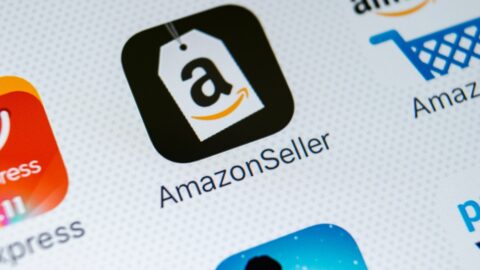 Smartphones influenced 31% of the $3.39 trillion in total (online and offline) U.S. retail sales in 2016, according to Forrester Research. Not bad for a technology that’s little more than a decade old.
Smartphones influenced 31% of the $3.39 trillion in total (online and offline) U.S. retail sales in 2016, according to Forrester Research. Not bad for a technology that’s little more than a decade old.
But despite mobile’s meteoric growth as a sales catalyst, the actual number of transactions completed on mobile devices remains low: $60.2 billion, or approximately 15% of the online sales total of $393.8 billion (and just 1% of total sales).
“Mobile casts a shadow that’s 30 times its size,” said Laura Naparstek, a Forrester researcher who spoke at the recent Forrester Consumer Marketing 2017 Forum. “But some people are asking whether mobile has betrayed its promise as the newest and most promising channel.”
Advertisement
For Naparstek, it’s not mobile’s performance that’s the problem; it’s in how the retail industry defines that performance. As the title of her session indicated, Mobile Is Not A Channel.
“Mobile is not the smartphone itself, but a cloud of connected things that enable consumers’ mobile interactions,” said Naparstek. “It’s more helpful to think of mobile as an adjective, not a noun — the alloy of connected things and the powerful context that comes with them.”
Forrester surveys indicate that “companies are still using e-Commerce metrics to define mobile commerce success,” said Naparstek. “For example, conversion rates are very important in e-Commerce, but when you apply it to mobile you’re forcing mobile to deliver results that it’s just not designed to deliver.”
Influence Is The True Mobile Currency
If mobile is indeed more of an influencer than an actual retail channel, how can marketers best leverage that influence? Naparstek offered five tips:
1. Don’t stop mobile marketing;
2. Start measuring microconversions;
3. Use mobile messaging to right-size engagement;
4. Experiment on third-party platforms; and
5. Prioritize specific web site features to complement your app.
Mobile marketing remains important as a means to drive awareness and brand equity, according to Naparstek. The four other tips are “additive to mobile marketing, not in lieu of it,” she noted.
Measure microconversions: Microconversions are “smaller success events in the customer journey,” and they are increasingly accomplished with the help of mobile technology, Naparstek explained. She shared the example of seeking a specific brand of jeans that she already knows fits her well.
“The goal is to find size 28 jeans with a 38-inch inseam in the store, so the action I took was to look up the local store’s inventory on a mobile web site,” said Naparstek. “That’s the microconversion; the macroconversion is going to the store to buy the jeans.” But the journey doesn’t end there: “Suppose I need to find a way to hem the jeans so that they have a cool frayed look. The action is to look on Instagram to find content on what the look is, as well as how to do it myself. Another action would be to find other colors of the jeans, for which I would do additional research on the mobile web site’s product page.
“At every stage I had a goal, and the brand delivered on mobile for each one,” Naparstek continued. “Marketers need to measure that mobile helped me accomplish this at each stage, and also make those measurements matter. Mobile can be successful if it’s helping customers solve problems.”
When Lower Usage Equals Higher Satisfaction
Mobile Messaging: Marketers also can use mobile messaging, in the form of push notifications, to “right-size” their customer engagement strategies, according to Naparstek. She cited Life360, a family networking app designed to help family members track each other during the day, for example by providing a push notification that a child has arrived on time at an after-school event.
“The app’s primary metric for success is how little the customers use it,” said Naparstek. “If the customer swipes to open up the notification, the app has failed. The idea is to have it running in the background and surfacing relevant information at the exact time the customer needs it.”
Third-Party Platforms: Retail marketers also can leverage third-party platforms in order to address a basic issue about mobile: that only a few consumers will download, and consistently use, a retailer’s mobile app. “88% of the time consumers spend on their phones are in just five categories of apps: social networks, video and music, messaging, games, and phone tools and utilities,” said Naparstek.
However, marketers can “borrow or steal time back from these popular apps,” Naparstek added. Fashion retailer Na Nin created an Instagram account to promote its fragrances, household items, apparel and art objects, and leveraged it as a messaging and marketing channel: “They target their entire customer base on Instagram and give them the option of buying via the network. They have 60,000 Instagram followers, including some influential people in fashion.”
Embrace The App: Naparstek’s final tip is to use the different strengths of mobile web sites and mobile apps. Sites operate as “kitchen sinks,” providing almost anything a consumer could want to discover about a brand, while apps are typically designed to facilitate actual purchases.
She gave the example of Glossier, which operates as a “constellation” of apps, including such well-known platforms as Slack, Instagram, Facebook Live and Apple’s iMessage. As with Na Nin, Glossier is “borrowing time” from each of these apps, using them for very specific functionalities. Slack is used for product testing with the brand’s most valuable and loyal customers, providing an easy way to reach out to Glossier’s community of brand representatives and influencers. Facebook Live is used to make employees a part of the brand, providing a platform where they can star in videos on product launches or boxing/packaging techniques.









